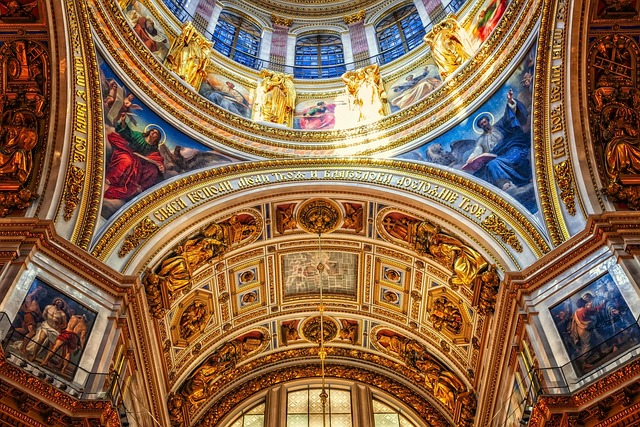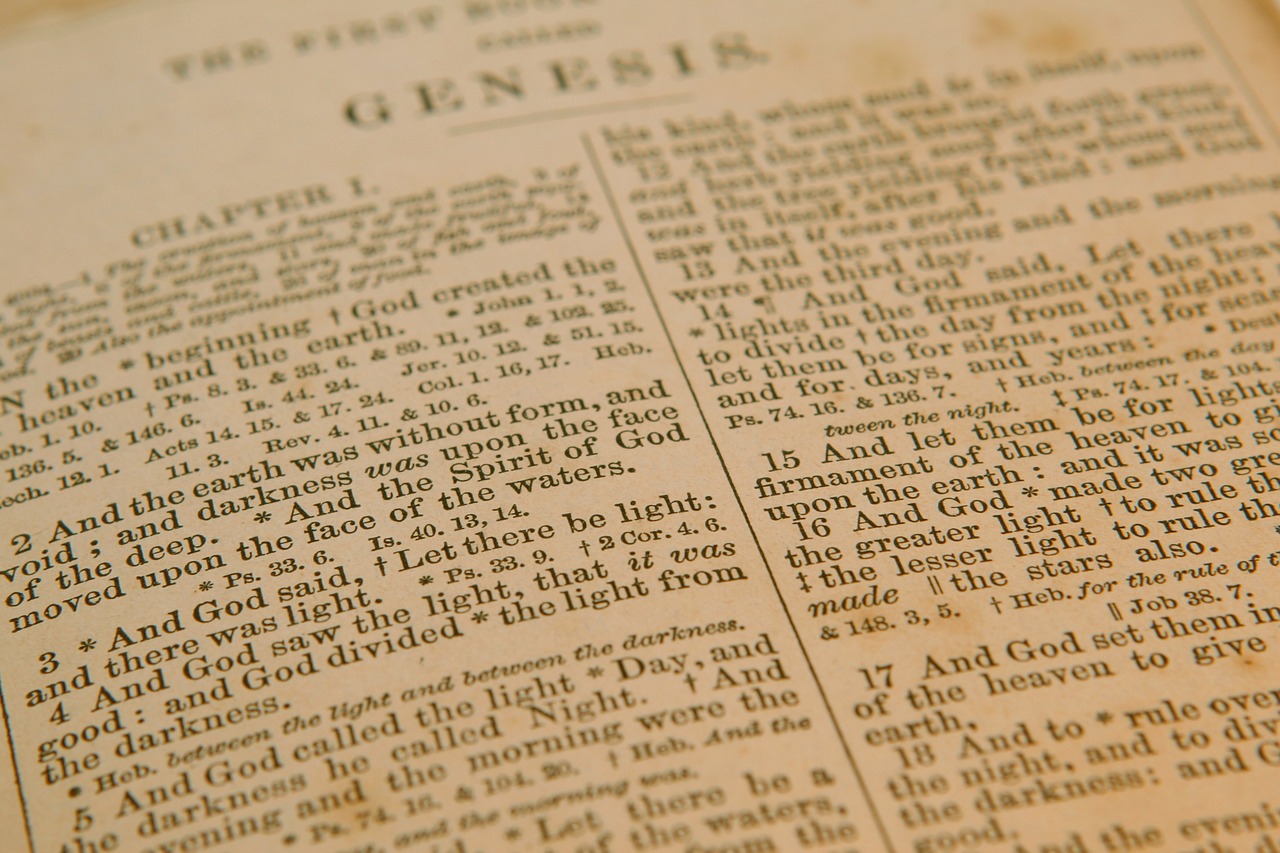Orthodox Christianity originated in the 1st century AD as a result of the teachings and ministry of Jesus Christ and his apostles. It developed as a distinct branch of Christianity, separate from Roman Catholicism, due to theological, cultural, and political differences. The early centers of Orthodox Christianity were in the Eastern Mediterranean, particularly in Jerusalem, Antioch, and Alexandria. Over time, the Orthodox Church expanded its influence and became the dominant form of Christianity in the Byzantine Empire. Today, Orthodox Christianity is one of the major branches of Christianity, with millions of adherents worldwide.
Table of Contents
The Origins and Early Development of Orthodox Christianity
Orthodox Christianity, one of the oldest branches of Christianity, has a rich and fascinating history that dates back to the early days of the faith. In this article, we will explore the origins and early development of Orthodox Christianity, shedding light on how this ancient tradition came to be.
To understand the beginnings of Orthodox Christianity, we must first delve into the early years of the Christian movement. It all started with Jesus Christ, who lived in the first century AD and preached a message of love, forgiveness, and salvation. His teachings attracted a group of followers who became known as his disciples.
After Jesus’ crucifixion and resurrection, his disciples spread his teachings throughout the Roman Empire. These early Christians faced persecution and hardship, but their faith remained steadfast. As the movement grew, different communities of believers emerged, each with their own interpretations of Jesus’ teachings.
One of the most influential figures in the early development of Orthodox Christianity was the Apostle Peter. According to tradition, Peter was chosen by Jesus to be the leader of the disciples and the foundation of the Church. He traveled extensively, spreading the message of Christ and establishing communities of believers.
Another key figure in the early development of Orthodox Christianity was the Apostle Paul. Paul, formerly known as Saul, was a zealous persecutor of Christians until he had a transformative encounter with Jesus. After his conversion, Paul became a fervent advocate for the faith and played a crucial role in spreading Christianity beyond Jewish communities.
As the Christian movement grew, it faced challenges from within and without. The Roman Empire, which ruled over much of the known world at the time, viewed Christianity as a threat to its authority. Christians were often persecuted and martyred for their beliefs, yet their numbers continued to increase.
In the early centuries of Christianity, various theological debates arose, leading to the formation of different Christian sects. One of the most significant controversies was the question of the nature of Christ. Some believed that Jesus was fully divine, while others argued that he was both divine and human. These debates shaped the development of Orthodox Christianity and led to the formulation of key doctrines.
In the fourth century AD, Emperor Constantine legalized Christianity and called for the Council of Nicaea to address the theological disputes that divided the Church. This council, attended by bishops from across the empire, affirmed the divinity of Christ and established the Nicene Creed, a statement of faith that remains central to Orthodox Christianity to this day.
Following the Council of Nicaea, the Church continued to grow and spread throughout the Byzantine Empire. The Byzantine Emperor became the protector and patron of the Church, and the bishop of Constantinople emerged as a prominent figure within the Christian hierarchy.
Over time, the Church in the Byzantine Empire developed its own distinct traditions, liturgy, and theology. This branch of Christianity became known as Eastern Orthodoxy, with its center in Constantinople, present-day Istanbul.
In conclusion, Orthodox Christianity has its roots in the early years of the Christian movement. It emerged from the teachings of Jesus Christ and the efforts of his disciples to spread his message. Through centuries of persecution, theological debates, and the patronage of emperors, Orthodox Christianity developed into a distinct and enduring tradition that continues to thrive to this day.
Key Figures and Events in the Formation of Orthodox Christianity

Orthodox Christianity, one of the oldest branches of Christianity, has a rich history that dates back to the early days of the faith. Understanding how it all began requires delving into the key figures and events that shaped the formation of Orthodox Christianity.
One of the most influential figures in the early days of Orthodox Christianity was Saint Peter, one of Jesus’ twelve apostles. According to tradition, Peter was appointed by Jesus himself as the leader of the apostles, giving him a central role in the early Christian community. Peter’s leadership and teachings laid the foundation for what would later become Orthodox Christianity.
Another key figure in the formation of Orthodox Christianity was Saint Paul. Originally a persecutor of Christians, Paul underwent a dramatic conversion experience and became one of the most zealous advocates for spreading the teachings of Jesus. His missionary journeys throughout the Mediterranean region played a crucial role in the expansion of Christianity and the establishment of early Christian communities.
The Council of Nicaea, held in 325 AD, was a pivotal event in the history of Orthodox Christianity. This council was convened by Emperor Constantine to address the growing divisions within the Christian community, particularly the controversy surrounding the nature of Jesus. The council affirmed the divinity of Jesus and formulated the Nicene Creed, which remains a central statement of faith for Orthodox Christians to this day.
Another significant event in the formation of Orthodox Christianity was the Great Schism of 1054. This event marked the formal split between the Eastern Orthodox Church and the Roman Catholic Church. The primary points of contention were theological differences, as well as disputes over authority and jurisdiction. The Great Schism had a lasting impact on the development of both branches of Christianity and shaped the distinct identity of Orthodox Christianity.
Throughout its history, Orthodox Christianity has been shaped by numerous key figures who have left a lasting impact on the faith. One such figure is Saint Athanasius, a fourth-century bishop who played a crucial role in defending the divinity of Jesus against the Arian heresy. His writings and teachings continue to be highly regarded within the Orthodox tradition.
Another influential figure in Orthodox Christianity is Saint John Chrysostom, a fifth-century bishop known for his eloquent preaching and strong emphasis on social justice. His sermons and writings continue to inspire Orthodox Christians to this day, highlighting the importance of compassion and care for the marginalized.
In conclusion, the formation of Orthodox Christianity was shaped by key figures and events that have left a lasting impact on the faith. From the leadership of Saint Peter and Saint Paul to the Council of Nicaea and the Great Schism, each of these figures and events played a crucial role in shaping the beliefs and practices of Orthodox Christians. Today, Orthodox Christianity continues to thrive as a vibrant and ancient branch of the Christian faith, rooted in its rich history and traditions.
Theological Beliefs and Doctrines of Orthodox Christianity
Orthodox Christianity, with its rich history and deep-rooted traditions, has captivated the hearts and minds of millions of believers around the world. But have you ever wondered how this ancient faith came to be? In this article, we will explore the theological beliefs and doctrines that form the foundation of Orthodox Christianity.
At the core of Orthodox Christianity lies a firm belief in the Holy Trinity – the Father, the Son, and the Holy Spirit. This belief is rooted in the teachings of Jesus Christ and is considered the cornerstone of the faith. Orthodox Christians believe that God is one, yet exists in three distinct persons, each with their own unique role in the divine plan.
Another fundamental aspect of Orthodox Christianity is the veneration of icons. Icons are sacred images that depict Christ, the Virgin Mary, and various saints. These holy images are not worshipped, but rather serve as a means of connecting with the divine. Orthodox Christians believe that through icons, they can experience a tangible connection to the heavenly realm.
The sacraments, or mysteries, hold a significant place in Orthodox Christianity. These sacred rituals are seen as a means of receiving God’s grace and are essential for spiritual growth. The seven sacraments include baptism, chrismation, the Eucharist, confession, marriage, holy orders, and anointing of the sick. Each sacrament is believed to bestow specific spiritual blessings upon the recipient.
Orthodox Christians also place great importance on the liturgical worship. The Divine Liturgy, the central act of worship, is a solemn and reverent service that incorporates prayers, hymns, and readings from the Holy Scriptures. The liturgy is seen as a participation in the heavenly worship and a way to commune with God and the saints.
The concept of salvation in Orthodox Christianity differs from some other Christian traditions. While many Christians believe in the doctrine of original sin, Orthodox Christians emphasize the concept of ancestral sin. According to this belief, all humanity shares in the consequences of Adam and Eve’s disobedience, but each person is responsible for their own sins. The goal of salvation is to restore the image of God within each individual and unite them with God’s divine nature.
Orthodox Christianity also places a strong emphasis on theosis, or deification. This concept teaches that through a life of prayer, repentance, and participation in the sacraments, believers can become united with God and partake in His divine nature. Theosis is seen as a lifelong process of transformation and spiritual growth, ultimately leading to union with God.
In addition to these theological beliefs and doctrines, Orthodox Christianity also upholds a rich tradition of asceticism and monasticism. Monks and nuns dedicate their lives to prayer, fasting, and self-denial in order to draw closer to God. Their example serves as an inspiration for all believers to strive for spiritual purity and detachment from worldly desires.
In conclusion, the theological beliefs and doctrines of Orthodox Christianity form a solid foundation for the faith. From the belief in the Holy Trinity to the veneration of icons, from the sacraments to the emphasis on liturgical worship, each aspect contributes to the unique and profound experience of Orthodox Christianity. Whether you are a believer or simply curious about this ancient faith, exploring its theological teachings can deepen your understanding and appreciation for Orthodox Christianity.
The Spread and Influence of Orthodox Christianity throughout History
Orthodox Christianity, with its rich history and deep-rooted traditions, has had a significant impact on the world throughout the centuries. From its humble beginnings to its widespread influence, this article explores how Orthodox Christianity started and its journey through history.
The origins of Orthodox Christianity can be traced back to the early days of Christianity itself. It emerged as one of the major branches of Christianity alongside Roman Catholicism and Protestantism. The term “Orthodox” comes from the Greek word “orthodoxia,” meaning “right belief” or “correct doctrine.” This branch of Christianity emphasizes the importance of preserving the original teachings and practices of the early Christian Church.
The spread of Orthodox Christianity began in the Eastern Roman Empire, also known as the Byzantine Empire, which encompassed present-day Greece, Turkey, and parts of the Middle East. The Byzantine Empire served as the center of Orthodox Christianity, and its influence extended far beyond its borders. Missionaries and theologians played a crucial role in spreading the faith to neighboring regions, including Russia, Eastern Europe, and the Balkans.
One of the most significant events in the history of Orthodox Christianity was the Great Schism of 1054. This event marked the formal split between the Eastern Orthodox Church and the Roman Catholic Church. The primary cause of the schism was a disagreement over the authority of the Pope and theological differences. As a result, the Eastern Orthodox Church became an independent entity, with its own hierarchy and traditions.
Throughout history, Orthodox Christianity has faced numerous challenges and triumphs. The Byzantine Empire, which served as the stronghold of Orthodoxy, faced invasions from various forces, including the Ottoman Turks. Despite these challenges, Orthodox Christianity managed to survive and even thrive in different regions.
In Russia, Orthodox Christianity became deeply intertwined with the country’s identity and culture. The Russian Orthodox Church played a significant role in shaping the nation’s history, politics, and art. The Russian Tsars, as the heads of both the state and the church, used Orthodoxy to legitimize their rule and maintain control over the population.
Orthodox Christianity also spread to other parts of Eastern Europe, such as Ukraine, Belarus, and Serbia. These regions developed their own distinct Orthodox traditions, blending elements of local culture with the teachings of the church. The Orthodox Church became a symbol of national identity and resistance against foreign influences.
In the modern era, Orthodox Christianity continues to have a profound impact on the lives of millions of people worldwide. The Orthodox Church has adapted to the challenges of the 21st century while preserving its ancient traditions. It has embraced technology, using social media and online platforms to reach a wider audience and connect with believers across the globe.
Orthodox Christianity’s influence extends beyond religious matters. It has played a significant role in promoting social justice, human rights, and peace. Orthodox Christians have been actively involved in charitable work, providing aid to those in need and advocating for justice and equality.
In conclusion, Orthodox Christianity has a long and storied history that has shaped the world in many ways. From its humble beginnings in the early days of Christianity to its widespread influence today, Orthodox Christianity has left an indelible mark on the world. Its traditions, teachings, and values continue to inspire and guide millions of believers worldwide.
Conclusion
In conclusion, Orthodox Christianity originated from the early Christian Church and developed into a distinct branch of Christianity. It was influenced by various factors, including the teachings of Jesus Christ, the apostles, and the early Church Fathers. The Great Schism of 1054 marked the formal split between the Eastern Orthodox Church and the Roman Catholic Church, solidifying the separate identity of Orthodox Christianity. Today, Orthodox Christianity is practiced by millions of believers worldwide, with its own unique traditions, liturgy, and theological perspectives.



